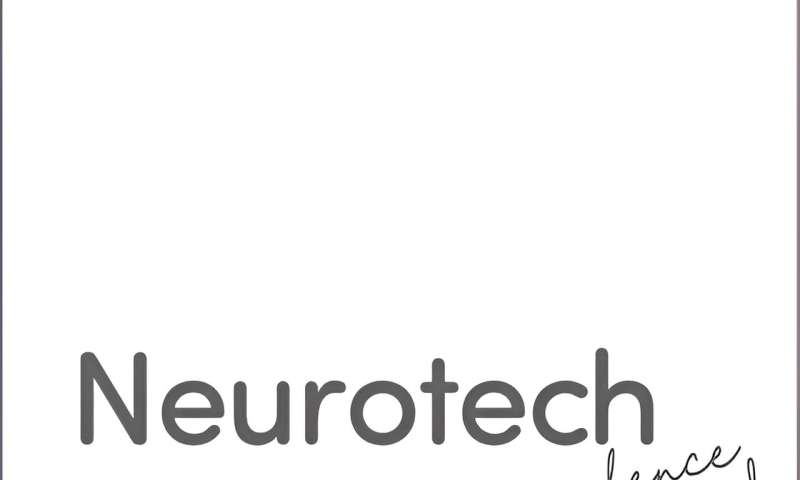The future is in your hands, and an evidence book for neurotech products can make it happen

Many companies have started to develop and promote products based on "neurotech," neurotechnology that can measure and regulate brain activity. However, the research supporting many neurotech products is…weak, to say the least.
Researchers from Japan noticed this problem and decided to improve society's understanding of neurotech through a series of publications. The research group has now released an evidence book summarizing the results of their evaluations on neurotech products, based on systematic reviews and their expertise in the field. The book aims to help neurotech users, researchers, and businesses sort the neurotech hype from reality.
A team of more than 20 young researchers carried out the systematic reviews upon which the evidence book is based. This team was overseen by the Evidence Evaluation Committee, which was made up of 12 senior researchers who specialize in different aspects of neuroscience. Furthermore, an External Review Board monitored the review process, the accuracy of the book's contents, and the transparency of the researchers' conflicts of interest. In total, over 40 experts, from professors to graduate students, were involved in the research and writing of the book.
The evidence book was developed as part of a larger project: the "Internet of Brains' (IoB), led by Ryota Kanai from Araya Inc. and the Advanced Telecommunications Research Institute International. The project is financed by the Japanese government through the Moonshot Research & Development Program, which aims to promote disruptive innovation. The IoB has a lofty goal: "to make neurotech a widely used technology in society."
The IoB project has also published a neurotech guidebook—first in Japanese in late 2022, and then in English in early 2023. While the guidebook is meant for potential neurotech consumers and businesses, and aims to promote the production and consumption of neurotech tools based on solid evidence, the evidence book focuses on summarizing the safety and effectiveness of various neurotech products, and is written for active users, researchers, and developers of neurotech.
"Unfortunately, we still believe that work is needed to ensure that neurotech products are safe to use, can be trusted, and are developed using solid research foundations," says Mitsuaki Takemi from Keio University, chairman of the Evidence Evaluation Committee. "To this end, we developed the evidence book to improve the global understanding of the science behind many currently available products and technologies."
In the evidence book, the Evidence Evaluation Committee selected 12 relevant questions that focus on three main branches of neurotech: neurofeedback training, non-invasive brain stimulation, and the use of electroencephalography (EEG) as a psychosocial marker.
In neurofeedback training, technology is used to provide feedback about the brain's activity in real time, and participants are trained to increase and decrease so-called desirable and undesirable activities. For example, people who are trying to quit smoking can be trained to modulate their brain responses to cravings by receiving live feedback about their brain activity.
Non-invasive brain stimulation refers to the use of stimuli such as electronic or magnetic currents, which can be applied to the scalp to alter brain activity. Notably, both of these types of neurotech are often touted to improve memory, motor performance, attention, and sleep. As for EEG, brainwaves can be measured to recognize different brain states, such as relaxation; EEG is thus often promoted as a neurotech tool for measuring emotional and relaxation states, reducing stress, and improving attention.
Of the 12 original questions that were developed for the evidence book, the first edition covers these four: can neurofeedback training improve motor performance? Can neurofeedback training improve sleep quality? Can neurofeedback training enhance attentional functions? And, is EEG a biomarker of relaxation?
The remaining eight questions in the evidence book—which cover the safety and effectiveness of neurofeedback training in memory, of non-invasive brain stimulation in motor performance, sleep, attention, and memory, and of EEG in stress, emotion, and attention—will be covered in future editions.
"Unfortunately, the answers to the first four questions all point to a lack of quality research," states Ryoji Onagawa from Waseda University, who leads the Systematic Review Team. "Looking on the bright side, however, the results of our systematic reviews have identified a number of future research avenues."
Coupled with the guidebook, the evidence book intends to support neurotech policies worldwide, foster societal conversations, and push the private sector to make more responsible decisions. In line with these aims, both the guidebook and evidence book will be registered as implementation tools for the Organization for Economic Co-operation and Development (OECD)'s 2019 neurotechnology recommendation.
The guidebook
Researchers from six different countries have contributed to the evidence book, a relatively international effort. Members of the IoB project also hope that their evidence-based approaches toward assessing the reliability of neurotech products can be further expanded; ideally, forming part of a greater international team with the help of global organizations.
The authors of the evidence book also plan to release updates every three to five years to maintain public confidence in neurotech. To improve the information included in the evidence book, they are open to receiving recommendations or questions to be included in future editions.
"To conclude, although the information that we have collected and summarized for the evidence book is useful, challenges remain," explains Mitsuaki Takemi. "The results of our investigations indicate that more research into both the effectiveness and safety of neurotech products is needed to improve public trust in this technology."
More information:
DOI: 10.14991/KO52004004
Provided by Advanced Telecommunication Research Institute International